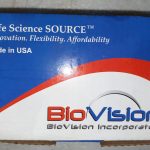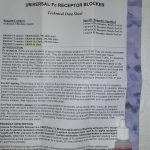Anaerobic micro organism ferment carbohydrates and amino acids to acquire vitality for development. Because of the absence of oxygen and different inorganic electron acceptors, the substrate of a fermentation has to function electron donor in addition to acceptor, which leads to low free energies as in comparison with that of cardio oxidations. Till about 10 years in the past, anaerobes have been thought to completely use substrate stage phosphorylation (SLP), by which solely a part of the obtainable vitality might be conserved.
- Due to this fact, anaerobes have been considered unproductive and inefficient vitality conservers. The invention of electrochemical Na+ gradients generated by biotin-dependent decarboxylations or by discount of NAD+ with ferredoxin modified this view. Decreased ferredoxin is offered by oxidative decarboxylation of 2-oxoacids and the not too long ago found flavin primarily based electron bifurcation (FBEB).
- On this assessment, the 2 completely different fermentation pathways of glutamate to ammonia, CO2, acetate, butyrate and H2 through 3-methylaspartate or through 2-hydroxyglutarate by members of the Firmicutes are mentioned as prototypical examples wherein all processes attribute for fermentations happen.
- Although the fermentations proceed on two completely completely different pathways, the utmost theoretical quantity of ATP is conserved in every pathway. The prevalence of the 3-methylaspartate pathway in clostridia from soil and the 2-hydroxyglutarate pathway within the human microbiome of the massive gut is traced again to the oxygen-sensitivity of the novel enzymes.
- The coenzyme B12-dependent glutamate mutase within the 3-methylaspartate pathway tolerates oxygen, whereas 2-hydroxyglutaryl-CoA dehydratase is extraordinarily oxygen-sensitive and may solely survive within the intestine, the place the combustion of butyrate produced by the microbiome consumes the oxygen and gives a strict anaerobic atmosphere. Examples of coenzyme B12-dependent eliminases are given, which within the intestine are changed by less complicated extraordinarily oxygen delicate glycyl radical enzymes.
The function of oxidative stress in HIV-associated neurocognitive problems
HIV-associated neurocognitive problems (HAND) are a number one reason behind morbidity in as much as 50% of people dwelling with HIV, regardless of efficient therapy with antiretroviral remedy (ART). Present proof means that persistent irritation related to HIV is very attributed to the dysregulated manufacturing of reactive oxygen species (ROS) that contribute to neurodegeneration and poor medical outcomes.
Whereas ROS have helpful results in eliciting immune responses to an infection, persistent ROS manufacturing causes harm to macromolecules corresponding to DNA and lipids that has been linked to altered redox homeostasis related to antioxidant dysregulation. Consequently, this disruption within the stability between antioxidant-dependent mechanisms of ROS inactivation and ROS manufacturing by enzymes such because the nicotinamide adenine dinucleotide phosphate (NADPH) oxidase household, in addition to from the electron transport chain of the mitochondria can lead to oxidative stress.
That is significantly related to the mind, which is exquisitely prone to oxidative stress as a result of its inherently excessive lipid focus and ROS ranges which have been linked to many neurodegenerative illnesses which have related phases of pathogenesis to HAND. On this assessment, we focus on the attainable function and mechanisms of ROS manufacturing resulting in oxidative stress that underpin HAND pathogenesis even when HIV is suppressed by present gold-standard antiretroviral therapies.
- Moreover, we spotlight that pathological ROS can function biomarkers for HIV-dependent HAND, and the way manipulation of oxidative stress and antioxidant-dependent pathways could facilitate novel methods for HIV remedy.
- Water air pollution by microplastics (MPs) has emerged as a major environmental and public well being concern. A number of standard applied sciences in ingesting water and wastewater therapy amenities are able to capturing a considerable portion of microplastics from floor water; nonetheless, solely restricted strategies can be found for precise destruction of microplastics.
- Fee of success is extremely variable, and precise mechanisms which lead to MP destruction are solely partly identified. Photocatalysis and microbial degradation applied sciences present promise at laboratory scale for the transformation of microplastics to water-soluble hydrocarbons, carbon dioxide and, in restricted circumstances, helpful fuels.
- Each photocatalytic and microbial applied sciences provide the potential for long-term water safety and ecological stability and deserve additional consideration by scientists. Further analysis is critical, nonetheless, in figuring out simpler semiconductors for photocatalysis, and optimum efficient microbial consortia and environmental circumstances to optimize microplastic biodegradation.
- Many extra polymer sorts past polyethylene have to be studied for degradation, and laboratory-scale analysis have to be expanded to field-scale. This paper gives a complete overview of processes and mechanisms for eradicating MPs by photocatalysis and microbial applied sciences.
- This assessment gives helpful knowledge for analysis devoted to improved removing of MPs from floor waters.

transgenicnews
Probing a number of enzymatic methylation occasions in actual time with NMR spectroscopy
Submit-translational modification (PTM) of proteins is of essential significance to the regulation of many mobile processes in eukaryotic organisms. One of the vital well-studied protein PTMs is methylation, whereby an enzyme catalyzes the switch of a methyl group from a cofactor to a lysine or arginine facet chain. Lysine methylation is very ample within the histone tails and is a vital marker for denoting energetic or repressed genes.
Given their relevance to transcriptional regulation, the research of methyltransferase perform via in vitro experiments is a vital stepping stone towards understanding the advanced mechanisms of regulated gene expression. Thus far, most methyltransferase characterization methods depend on using radioactive cofactors, detection of a methyl switch byproduct, or discontinuous-type assays.
Whereas such strategies are appropriate for some functions, details about a number of methylation occasions and kinetic intermediates is commonly misplaced. Herein, we describe using two-dimensional NMR to observe mono-, di-, and trimethylation in a single response tube. To take action, we included 13C into the donor methyl group of the enzyme cofactor S-adenosyl methionine (SAM). On this approach, we could research enzymatic methylation by monitoring the looks of distinct resonances akin to mono-, di-, or trimethyl-lysine with out the necessity to isotopically enrich the substrate.
To show the capabilities of this methodology, we evaluated the exercise of three lysine methyltransferases, Set7, MWRAD2 (MLL1 advanced), and PRDM9, towards the histone H3 tail. We monitored mono- or multi-methylation of H3K4 via sequential quick 2D HSQC experiments and match the ensuing progress curves to first-order kinetic fashions. In abstract, NMR detection of PTMs in one-pot, real-time response utilizing facile cofactor isotopic enrichment exhibits promise as a technique towards understanding the intricate mechanisms of methyltransferases and different enzymes.




